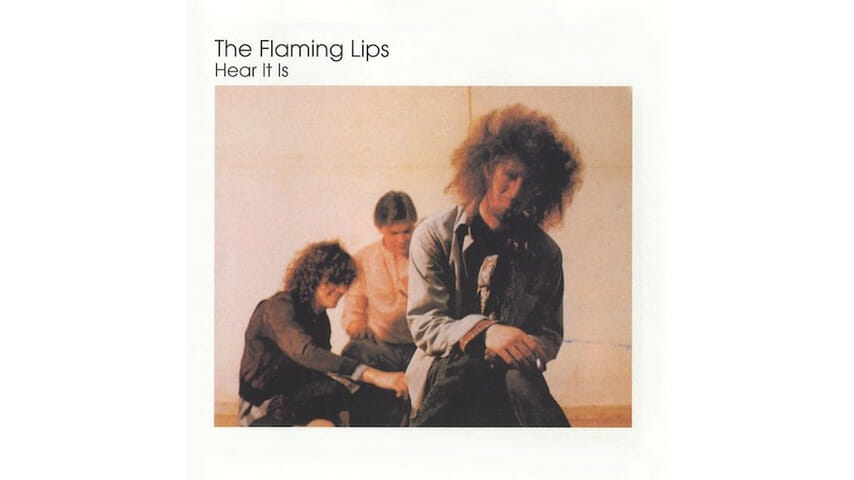The Flaming Lips: Hear It Is/Oh My Gawd!!!/Telepathic Surgery Reissues

During the 1980s, The Flaming Lips conceived of themselves as “some sort of no-talent, derivative, hillbillies-gone-punk version of The Who,” Wayne Coyne says in the documentary The Fearless Freaks. The proclamation makes some sense when you listen to the band’s long-neglected first three albums, released on Restless Records between 1986 and 1989. The music is light years removed from the polished psych-pop masterpieces for which the band later became known, but it doesn’t have much in common with explosive and accomplished ’90s releases like Clouds Taste Metallic either.
In Reagan’s America, the Lips played fast, loud and sloppy as hell, with Coyne singing in an unrecognizably gruff warble and chaotic drum fills supplied by a Keith Moon-worshipping fellow named Richard English. And yet however hard the Lips tried to depict themselves as satan-worshipping Oklahoma freaks—bashing out tributes to Charles Manson or revving a motorcycle onstage full throttle—Coyne’s underlying vulnerability flickered through, particularly on quiet cuts like “Godzilla Flick” and “Love Yer Brain.”
In time for the band’s 35th anniversary, Rhino and Warner Bros are reissuing the three albums Hear It Is, 1987’s Oh My Gawd!!!…The Flaming Lips, and 1989’s Telepathic Surgery—on vinyl (to be followed by 1990’s In a Priest Driven Ambulance and a double-LP rarities collection in September). This is good news for diehards (or any fans aware the Lips made records prior to 1992), especially considering the releases have been remastered from original sources by post-’80s Lips producer Dave Fridmann, who successfully clears up some of the aural murkiness. (These reissues, thank God, also restore the original cover art after some ill-advised vinyl designs from the early 2000s.)
The first album, Hear It Is, arrived in early 1986, shortly after Coyne replaced his brother Mark on vocals. While admittedly amateurish, it is also surprisingly fun and purposeful in the way of debuts by young bands unsure if they’ll ever get to make another. The songs boast loud, crude, bashing riffs (“Unplugged,” “Trains, Brains, And Rain”) and endearingly off-key vocals; the lyrics already exhibit Coyne’s enduring fascinations with Jesus, religion, evil and mortality. To its additional credit, Hear It Is contains two early Lips classics: the eerie, blasphemous “Jesus Shootin’ Heroin” and the deranged “Charlie Manson Blues,” with its cult-like “Hoo-ha! Hoo-ha! Hoo-ha!” chorus. College radio was impressed, and the band got to make another.
The second album, Oh My Gawd!!!, was released the same year as classic American indie underground releases from Dinosaur Jr., The Replacements and Sonic Youth yet seems to have emerged from an entirely different universe, in part because of Coyne’s fetishistic obsession with druggy iconography—the tripped-out album art, coupled with titles like “The Ceiling Is Bendin’,” seemed to suggest that this band swallowed acid for breakfast each morning. (Not so: Coyne’s interest in drugs was primarily aesthetic.)
-

-

-

-

-

-

-

-

-

-

-

-

-

-

-

-

-

-

-

-

-

-

-

-

-

-

-

-

-

-

-

-

-

-

-

-

-

-

-

-








































